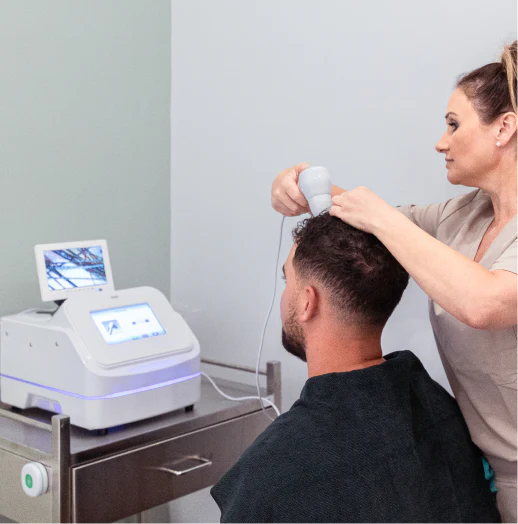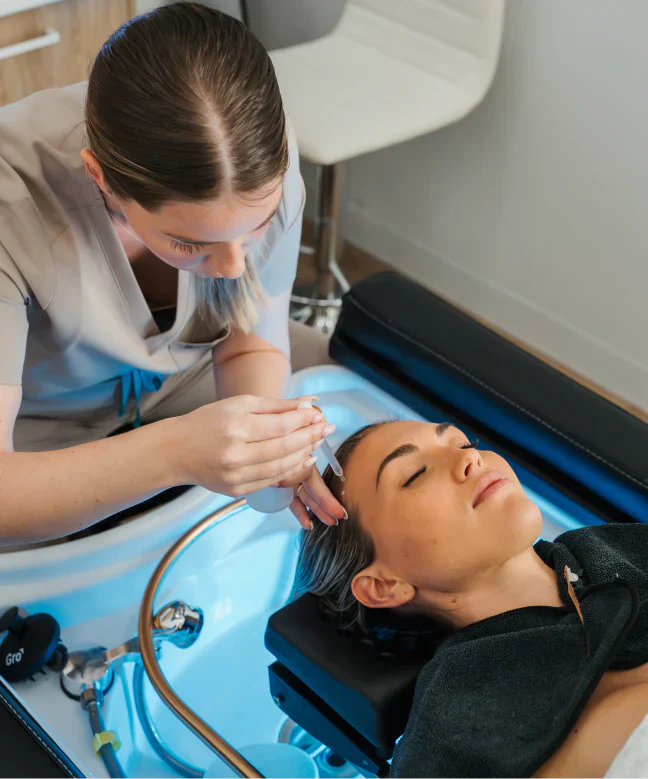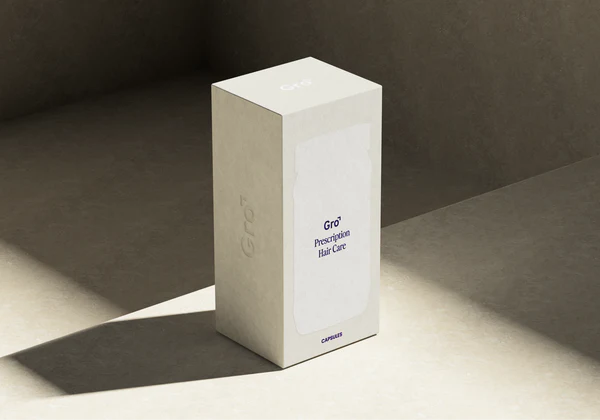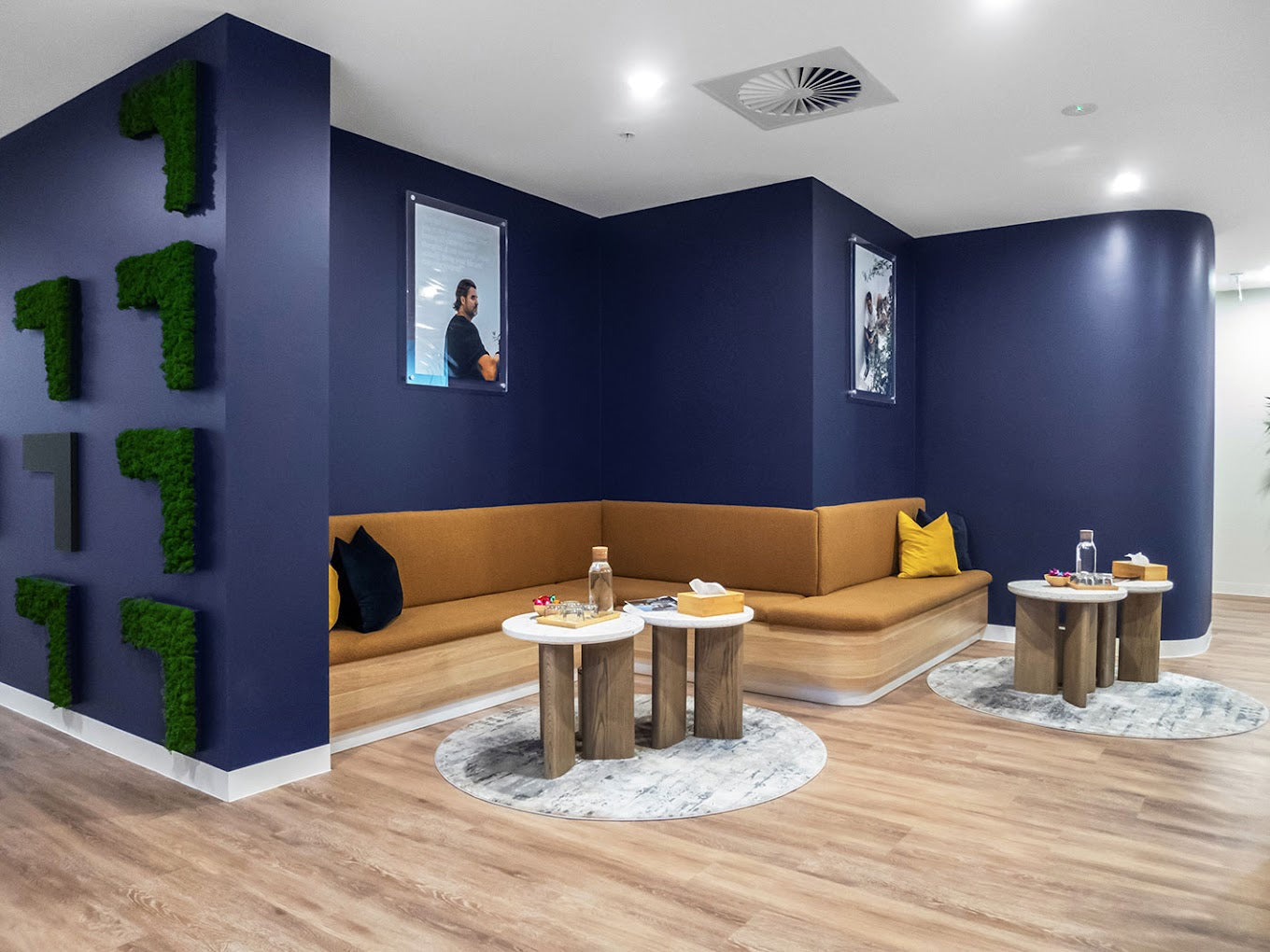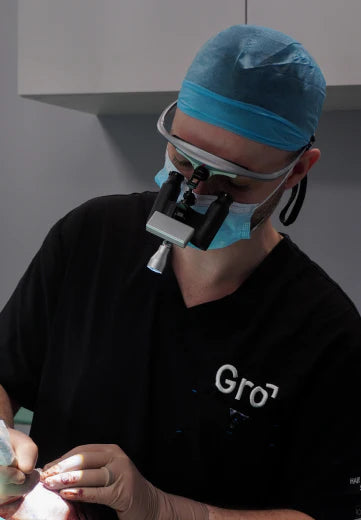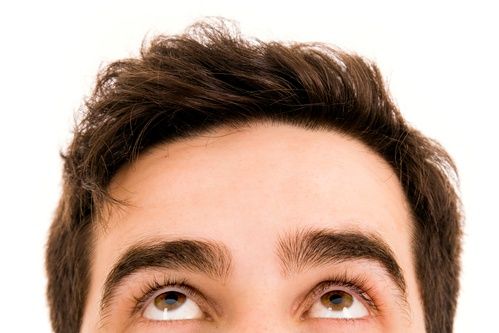Hair loss is a natural part of the ageing process, but in some cases, hair loss can be triggered earlier than is normal. Premature hair loss can have a profound psychological impact on many men, who feel and look older than they should, or believe that they aren’t attractive without a full head of hair.
If you have been thinking about treatment for your hair loss, this article explains your hair transplant options.
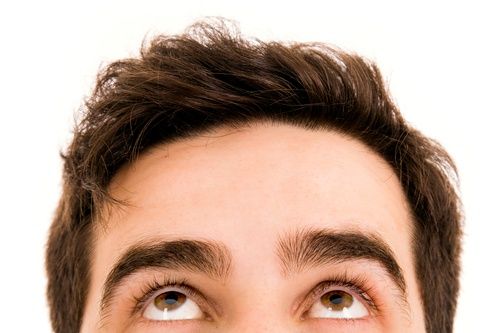
What Causes Premature Hair Loss?
There are many triggers that can cause premature hair loss, such as stress, poor diet, smoking, hormonal imbalance, or an illness or infection. In most cases, once the trigger is removed or treated, hair growth returns to normal.
By far the most common reason for hair loss is androgenetic alopecia, which results in progressive hair loss in a distinctive pattern (known as male pattern hair loss or male pattern baldness). Androgenetic alopecia is an inherited condition that can begin any time after puberty and becomes more noticeable with age. Treatment with Minoxidil (such as Rogaine) or Finasteride (Propecia) slows down hair loss, but this is a temporary solution unless taken for the rest of your life. The only permanent way to get the hair back that you’ve lost is through hair transplants.
How Do Hair Transplants Work?
Healthy hair (donor) follicles are taken from areas of the scalp that aren’t affected by baldness, such as low on the back of the head and are non-surgically inserted one by one into the area to be treated.
The common methods of donor follicle harvesting are:
Follicular Unit Transplant (FUT) – donor hair follicles are removed in a long thin strip of scalp and divided into single units under a microscope. The site where the scalp is removed is then sewn back together. However, it creates a long thin scar at the back of the scalp that may be visible under short hair.
Follicular Unit Extraction (FUE) – a punch is used to make a small circular cut in the skin around a hair follicle or group of follicles, removing them from the scalp leaving a small open hole. The process is repeated until the doctor has enough follicles to cover the treatment area. The holes heal to tiny white scars scattered throughout the donor area. The scars heal quicker and are less visible than FUT.
The difference between FUT and FUE is in the extraction phase of the procedure. Donor follicles are implanted using the same methods for FUT and FUE. Holes are created in the treatment area and the hair follicles placed into the holes with forceps. Implantation is normally done by technicians, not by doctor.
The Gro sessions are performed by a Certified Doctor from start to finish. The follicles are extracted with a specialised tool designed to minimise damage to the hair follicle and surrounding scalp tissue. Individual follicles are kept in a growth solution called HypoThermosolTM at a constant temperature to ensure optimum survival, development and growth after placement. Hair follicles are implanted using another specialised tool, the implanter, that allows the Gro doctor to control depth, direction and angle of placement, giving you a really natural result. There is also no need to create recipient holes on the treatment area with Gro.
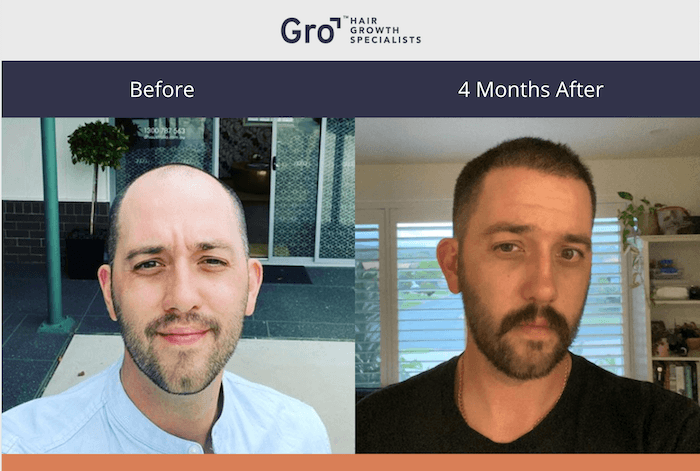
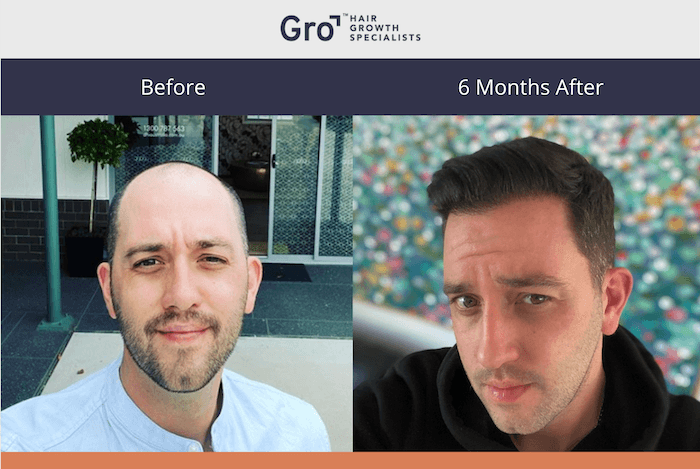
Am I Good Candidate For Hair Transplant?
Hair transplants are suitable if you are in good general health and your hair loss is affecting your self-confidence and self-esteem. You may not be a suitable candidate for hair transplants if you don’t have enough hair in the donor area to get sufficient donor follicles, or if the recipient/ implant area isn’t able to support the donor graft. We generally advise against hair implants for those too young and without a noticeable hair loss pattern yet but we offer other options (like PRP growth factor therapy) to delay or prevent hair loss, or to thicken your hair.
Gro hair implantation can provide you with a permanent, natural solution to your hair loss. It is a safe, painless and effective option that can provide noticeable results within 3-4 months. If you suffer from hair loss, answer these 3 questions to discover the best treatment option for you or call us on 1300 787 563.


